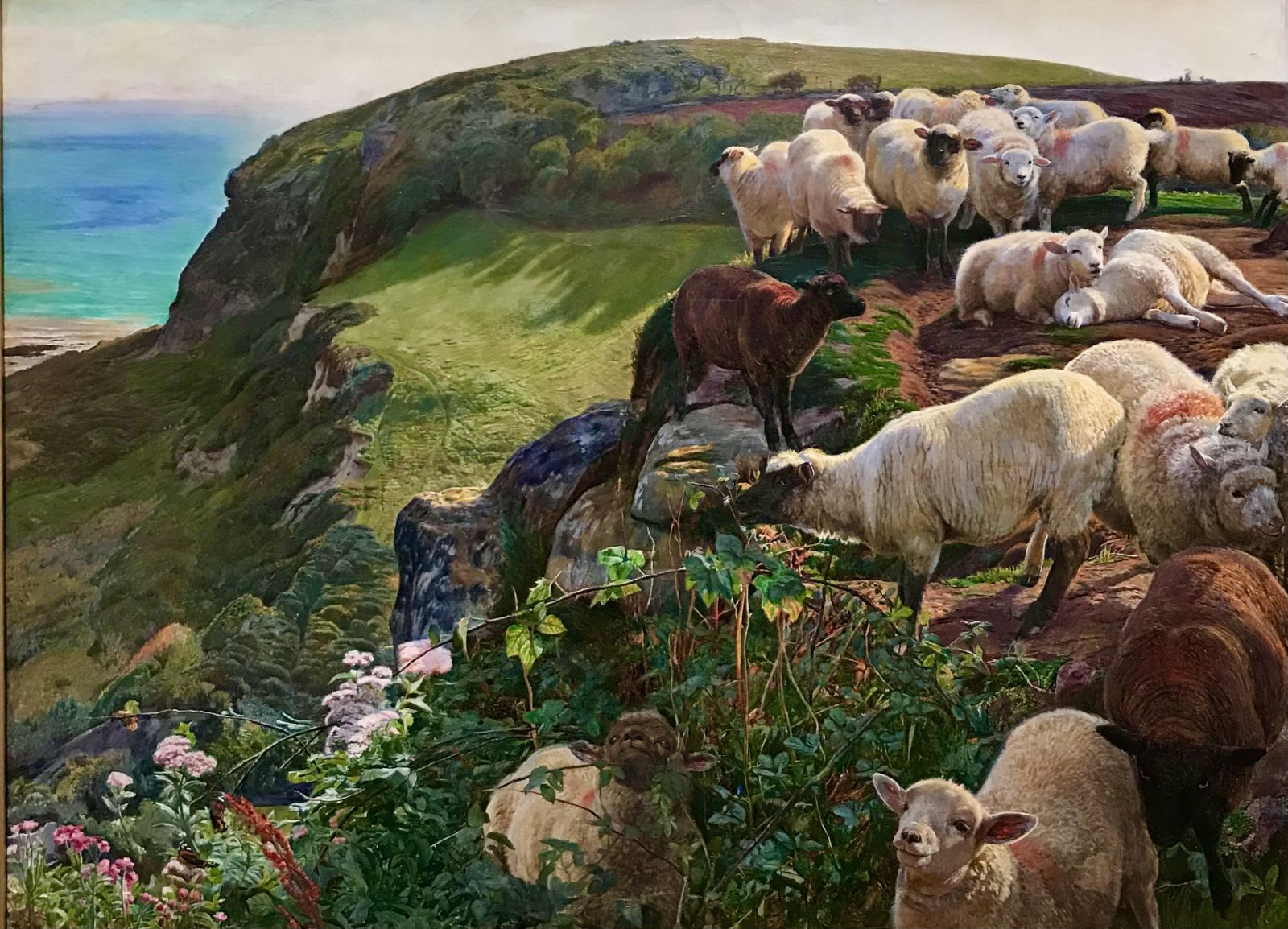Strayed Sheep by Holman Hunt 1852
‘Strayed Sheep’ in Tate Britain is a breathtaking painting by Holman Hunt. The minute detail and painstaking brushwork is outstanding, while the painting as a whole glows with the effects of the afternoon sunlight streaking across the coastal downs of Sussex.
Rather like the Impressionists twenty years later, it was largely painted outdoors, but to a totally different effect: not to give ‘an impression’ but to be relentlessly realistic; uncompromising in its truth to the appearances of nature.
Gazing at it for a while I am in awe at the texture of the grass on the far hill; the quality of the sheep’s wool; the care taken to depict every leaf and bramble as the light shines through; the texture and colour of the rocks and the wild flowers.
One effect of light that I love is the light shining through the ears of the lamb nearest us, glowing red with the blood of the ear; an effect I was delighted to see in real life on a walk recently.
A wonderful drowsy mood permeates the painting with one prone sheep basking in the warmth of the sun, and others nestling their heads affectionately on each other; but there is confusion and danger dramatized by the lamb caught up in the brambles on the cliff edge, looking at us for help and confused as to how he got into such a pickle. Why indeed are all the sheep gathered so precariously on the edge of the cliff? How can they be so unaware of the danger?
For all its realism and fidelity to detail, this painting is simply a metaphor. In religious terms it illustrates the line of Isaiah ‘For we like sheep have gone astray. We have left God’s paths to follow our own’. Absorbed in easy comforts and oblivious to danger, we find ourselves on the brink of disaster.
1848 had been a year of revolutions and uprisings across Europe, in France, Italy, Germany, Austria and Belgium, and there had been much discussion here about how poorly defended our coasts were against attack by Napoleon III. The location of the painting near Hastings hints at the successful invasion by William the Conqueror. In the far distance on the horizon there is the wisp of smoke from a steamship, which some regard as symbolising that renewed threat. Equally, as in a novel by Thomas Hardy, it could symbolize the threat to our peaceful rural way of life by the coal powered industrial revolution.
Of course, at the thought of coal, I cannot resist an ecological interpretation of the painting: that we like sheep are careless of the dangers of the climate crisis and of ecological breakdown. Absorbed in our enjoyment of the comforts of our fossil-fuelled lifestyles and the late afternoon sunlight, we have no regard for the precipice on which we stand.
Of course Holman Hunt would not have had that interpretation in mind! But as viewers, we are free to find and explore our own insights and metaphors.
That said, one final detail is unarguable: in the bottom left-hand corner are two butterflies, possibly engaged in courtship, but always symbols of the transience of life. Life is fleeting. We are in danger. We are in need of a shepherd. There is no time to lose.
